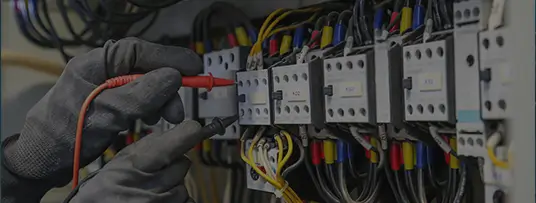Finding High-Quality Industrial Fittings for Your Needs
Posted on April 14, 2025
thomas smith
Aerospace
Within manufacturing plants, processing facilities, or any other industrial settings that handle liquids, gases, or pneumatic operations, having a dependable selection of fittings is vital. Fittings are responsible for secure, leak-proof connections between pipes, tubing, and hoses, thus maintaining system pressure, flow direction, and overall mechanical integrity. In this blog, we will explore a few distinct types of industrial fittings and the qualities to keep in mind when selecting them, helping you determine which are the most suitable for your needs and how to source them effectively.
Hose Fittings
Hose fittings connect flexible hose lines to other hose sections or rigid system components like valves, tanks, and pumps. Designed to accommodate dynamic environments, these
fittings provide a secure, leak-free seal for conveying liquids or gases under fluctuating pressure levels while allowing for some degree of flexibility during operation. Their construction typically includes barbed or threaded ends that anchor securely into the inner diameter of a hose.
Common Subtypes
-
Barbed Hose Fittings: These fittings incorporate ridged or serrated ends that grip the hose and form a semi-mechanical seal. When paired with clamps or crimp sleeves, they prevent leaks even in highly pressurized systems, though by themselves, they are ideal for air and fluid lines in lower-pressure applications.
-
Quick-Disconnect Hose Fittings: These are engineered for convenience, enabling rapid connection and disconnection of hose assemblies with push-and-pull or twist-lock mechanisms that do not require tools.
-
Cam and Groove Fittings: Popular in bulk fluid handling industries, these fittings feature a male adaptor (groove) and a female coupler (cam arm) that latch into place with minimal effort.
Pipe Fittings
Pipe fittings are used to connect, redirect, or terminate sections of rigid piping systems that carry liquids, gases, or slurries. As such, their shape, wall thickness, and angle of curvature should be carefully selected to maintain mechanical strength while facilitating smooth dynamics throughout the system. Moreover, they must be dimensionally compatible with the pipe’s joining method—whether via threaded ends, welded seams, or flanged faces—to ensure a leak-proof connection.
Key Subtypes
-
Elbows: Designed to change flow direction, elbows come in standard 45° and 90° angles. Long-radius elbows reduce pressure drops and are preferred for high-flow systems, while short-radius versions are suited for compact installations.
-
Tees and Crosses: These fittings allow branching from a main pipeline, either in a T configuration or a four-way cross. Equal and reducing variants exist to manage differing pipe diameters.
-
Reducers: Reducers facilitate smooth transitions between pipes of different diameters, minimizing turbulence and preventing air entrapment in liquid systems.
Compression Fittings
Compression fittings offer a solder-free solution for sealing and connecting rigid tubing in fluid and gas systems. These fittings consist of three primary components: the compression nut, the compression ring or ferrule, and the body. When the nut is tightened, the ring compresses against both the tubing and the internal tapered seat of the body, creating a seal that allows for repeated assembly and disassembly without degradation of performance under fluctuating fluid pressures.
Hydraulic Fittings
Hydraulic fittings are engineered for systems that transmit mechanical power through fluid pressure. Found in high-stakes applications like construction equipment and aerospace systems, these fittings must reliably endure extreme pressures, pulsations, and potential vibration over long operational lifespans. As such, they are precisely machined to prevent micro-leaks.
Notable Types
-
Flared Fittings: These feature a flared tubing end—often at a 45° or 37° angle—which mates with a conical seat inside the fitting.
-
O-Ring Face Seal (ORFS) Fittings: These utilize a flat-faced design with an embedded O-ring that seals against a smooth mating surface. Known for their excellent vibration resistance and superior sealing performance, ORFS fittings are ideal for hydraulic systems in heavy machinery.
Pneumatic Fittings
Pneumatic fittings are central to air-powered systems, where they connect compressors, valves, cylinders, and other components. Their geometry is optimized to minimize pressure drops and ensure precise flow regulation. Many also incorporate quick-connect or push-in mechanisms, enabling rapid installation and simplified maintenance in fast-paced environments.
Popular Subtypes
-
Push-to-Connect Fittings: These are renowned for their tool-free assembly, where internal gripping claws and O-rings form a secure and airtight seal upon simply being pressed into tubing.
-
Manifold Fittings: Used to distribute compressed air from a single inlet to multiple outlets, manifold fittings reduce the need for excessive tubing.
-
Silencer Fittings: Attached to exhaust ports, these reduce noise and back pressure produced by pneumatic actuators and valves. They often include porous sintered materials and contribute to a quieter, safer work environment.
Purchasing Considerations
When sourcing fittings for industrial operations, factors like the pressure range, sealing method, and corrosion resistance demanded of the application at hand should all be considered. One particularly important factor is the selection of material, which should be optimized to maintain integrity over time. Stainless steel is favored for its corrosion resistance and strength in chemical or marine settings, while brass is common for its machinability and durability in air and water lines. For less demanding or cost-sensitive applications, plastic and composite alloys offer a lightweight alternative.
Moreover, it is essential to prioritize fittings that are certified to perform in demanding environments. Common industry benchmarks like ANSI, ASME, and ISO certifications establish parameters like dimensional tolerances, pressure ratings, and thread configurations, all of which promote interchangeability and consistency. Sourcing from trusted names like Appleton, Parker Hannifin, Swagelok, Eaton, and other leading industrial parts manufacturers means you can be sure the fittings you order meet such engineering standards, providing peace of mind when integrating them into critical systems.
Source Premium Fittings from Industrial Parts Distribution
At
Industrial Parts Distribution, we specialize in helping customers secure the industrial automation supplies they need for success with competitive and curated procurement solutions. Our inventory includes high-quality fittings and an expansive range of other components that meet stringent industry standards and trace back to top manufacturers from around the globe. Whether you are seeking general-use or highly specialized fittings, you can rely on our platform to support your operations with dependable, quality-assured options every time.

 The only independent
The only independent



